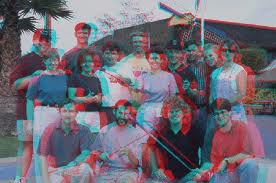I recently sponsored a joint event with Creston, an environmental controls company with a branch in Denver. This event was targeted at interior designers. My presentation focused on how to create better interior design photographs, using a few simple techniques that interior designers could use.
First, I provided some characteristics of good interior photography. I offered some examples. Then some camera suggestions to make it easier to utilize the techniques I would offer later.
Two techniques were presented; Fill flash and HDR.
Fill flash is a technique to use the camera's flash to fill in shadows, and balance the lighting. This gets a bit tricky, since many interiors have a mix of tungsten light and daylight coming through windows. Here are a couple of slides from the presentation showing that.
Both of these photo series show how flash fill can provide better lighting to the dark shadow areas of the room.
I then moved on to the most powerful photography technique to come along in a long while: High Dynamic Range photography or HDR. This technique combines different exposure captures of the room, and combines them using software into one image, with proper exposure sections from the different captures. The real intent of the technique is create a photograph that looks more like what your eyes see. Here's a condo I photographed a few months ago:
Here you can see that the circled sections of each of the captures were used in the composite HDR image below. So we ended up with a better exposed kitchen, along with the view out the window.
Here is the same kitchen as above, comparing the fill flash with the HDR composite:
The HDR image looks pretty good, and eliminates the flash artifact on the refrigerator door. These HDR composites were made post using computer software.
Well, the amazing thing now is that HDR can be done automatically IN THE CAMERA now. Using a camera setting, new P&S cameras will take a quick sequence of 2-3 captures of different exposures, then blend them together in a split second, to create an HDR composite that looks quite good. Here is an example:
Note the light fixture and view out the windows; we get detail in both now using the HDR blend. And the amazing thing is that the children in the lower left are still sharp in the HDR blend! HDR is an amazing thing!
Now, you may ask why would I show interior designers how to take better photographs themselves? Doesn't that take business from me? Well, not really. Many (most?) interior design projects don't really have the budget to afford a professional photographer, so that really isn't business I'm losing. And really, we professional photographers just like good photography, rather than the "good enough" photography that seems the standard these days on the web. And maybe they'll think of me when they have a bigger project.
I think the presentation was welled received by those in attendance.
If you want a copy of the full presentation, just email me; I'd be glad to send it to you.
greg@constructedimages.net
Again, thanks for your reading and interest.
Greg


























